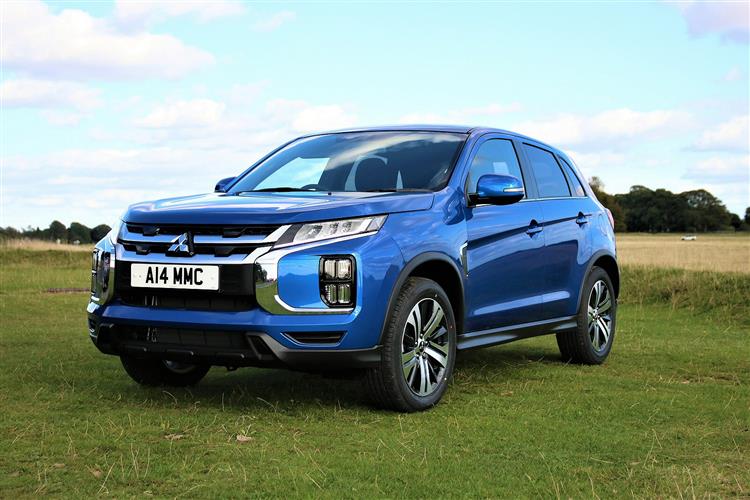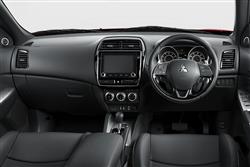How will you view?
This is a sample, showing 30 seconds of each section.
X-RATED (some text hidden) SECTIONED_new_mitsubishiasx_2020
By Jonathan Crouch
Introductionword count: 53
If you're looking for a small SUV from the 2019-2021 period, the Mitsubishi ASX is the compact Crossover that you probably left off your shortlist. This last version though, might deserve your attention. It certainly smartened up its act. A contender that's just that bit more capable than your average little urban SUV.
Modelsword count: 4
5dr SUV (2.0 petrol)
Historyword count: 477
What was Mitsubishi's most important model? You'd probably (rightly) say the Outlander PHEV but it should have been this car, the ASX small SUV, which in 2019 was substantially revised, creating the model we're going to look at here. This was still a version of the first generation model, introduced way back in 2010. But it was brought as up to date as Mitsubishi could make it - as we're going to see. This approach wasn't ideal of course. We should have had an all-new second generation ASX long before 2019. The reason we hadn't was that Mitsubishi merged with the Renault / Nissan Alliance conglomerate in 2017 and its new masters wanted the fully-fledged MK2 version of this car to sit on the same CMF-B platform as a Captur or a Juke. Which was going to take rather a long time to sort out, so to keep sales buoyant in the interim period, the original ASX was treated - in the Autumn of 2019 - to an update that turned out to be just about as far-reaching as facelifts tend to get. Yes, another one. In the unlikely event that you're familiar with the ASX model line, you might know that by 2019, this design had already had one substantial facelift - back in 2016. In the period from then until the time of this second update, the car lost rather more than it gained, the important options of 4WD and auto transmission drifting out of the line-up, while the original visual mid-term updates didn't keep the car looking current for as long as the Japanese brand's stylists hoped they would. Which was a problem, given that the ASX had long been one of the most important models in the Mitsubishi range, the marque's third best seller, by 2019 having accumulated 1.36 million global sales since its original launch, 343,000 of those in Europe, where this small SUV accounts for 27% of the company's total sales. All of which explains why we got this improved version in 2019, tasked with keeping Mitsubishi's seat warm in the Crossover category until the altogether more sophisticated Renault/Nissan-engineered MK2 version of this model came along. Lots was certainly done here - there was all-new sheet metal from the windscreen forward, with a completely fresh front end. In addition, the auto and 4WD options returned, there was an updated interior and enough extra equipment to make rivals look stingy. Plus the only engine option was a more powerful new 2.0-litre petrol engine to replace the old 1.6 (though it was still normally aspirated rather than turbocharged). In short, Mitsubishi was out to prove that there was still life in this compact Crossover. It turned out though, that there wasn't. Sales were slow and the ASX finally left the British market when the Mitsubishi brand pulled out at the end of 2021.
What You Getword count: 431
If we told you that this post-2019-era ASX was a completely new generation version of this model, we reckon you'd believe us. What certainly was new with this final MK1 ASX facelift was this car's fresh, more assertive visual attitude, especially here at the front. You can't help wondering just how much more successful this Crossover could have been had Mitsubishi realised the need for this earlier in this model's production cycle. Most of the styling changes feature at the front where all the sheet metal forward of the windscreen is completely new. The bolder, more distinctive 'Dynamic Shield'-style front grille that back in 2019 we'd seen on other recent Mitsubishi models like the Eclipse Cross and the sixth generation L200 was been adopted here. And, in amongst all the extra chrome, there was a chunkier front skidplate and restyled squarer LED indicator and front fog lamp units which nestle in the redesigned bumper. Facelift budgets rarely allow for any fundamental changes in cabin architecture - and this one was no exception. As for the updates that were made here, well most of them were detail ones. There were new seat fabrics - or, in the case of the top 'Exceed' model, smarter leather upholstery. The air conditioning controls were redesigned and featured piano black and silver accents. More piano black trimming featured on the central instrument panel and there was a smarter black headliner. And, perhaps most significantly, the centre-dash 'SDA' infotainment screen was increased in size from 7 to 8 inches and included Apple CarPlay and Android Auto smartphone-mirroring. The recessed gauges you view through the re-designed four-spoke leather-stitched steering wheel are very much of the conventional kind, separated by a small display with fuel and temperature read-outs. Once inside, spacially, it's really not that much different from what you'd get in something like a Qashqai. Helped by reasonable leg room and the relatively low transmission tunnel, three adults could just about sit together back here, providing they were on pretty friendly terms, didn't mind rubbing elbows and the journey wasn't too long. Headroom's pretty good by class standards too, though is fractionally compromised by the top model's panoramic glass roof, which agreeably floods the cabin with light. Out back. The light tailgate can't be power-operated (a modern fad we could quite happily do without) and once it's risen, there's a usefully low loading lip and a reasonably-sized 442-litre boot. To give you some class perspective, that's 20-litres more than a Renault Captur, 22-litres more than a Nissan Juke and 42-litres more than a Skoda Kamiq. Decently class-competitive then.
To see the full road test text contact us on 0330 0020 227
Pictures (high res disabled)

.jpg)
|
.jpg)
|
.jpg)
| |||
.jpg)
|
.jpg)
|
.jpg)
| |||

|
Scoring (subset of scores)
Category: Crossover or SUV 4x4s
| Performance | |
| Handling | |
| Comfort | |
| Space | |
| Styling, Build, Value, Equipment, Depreciation, Handling, Insurance and Total scores are available with our full data feed. | |



